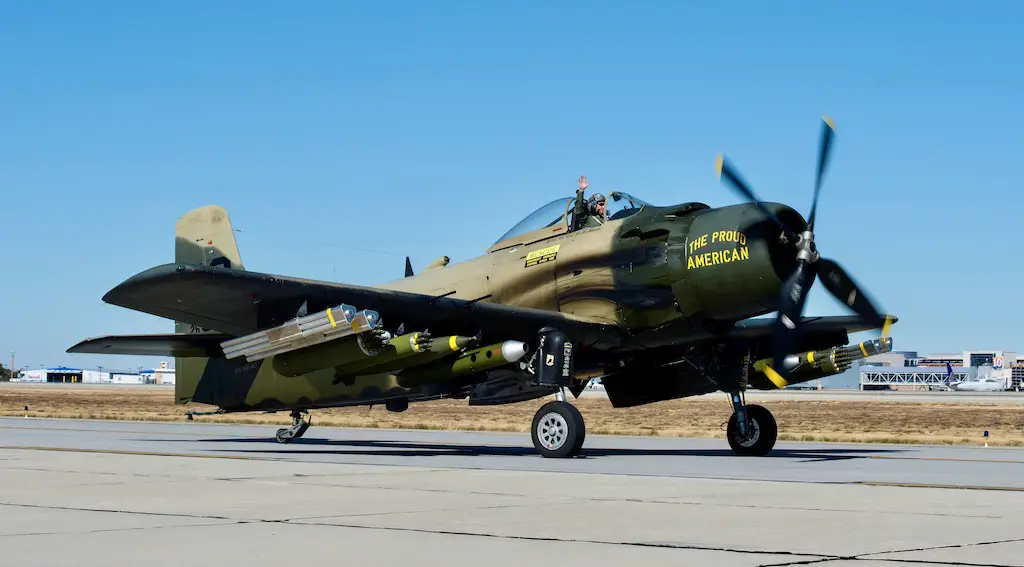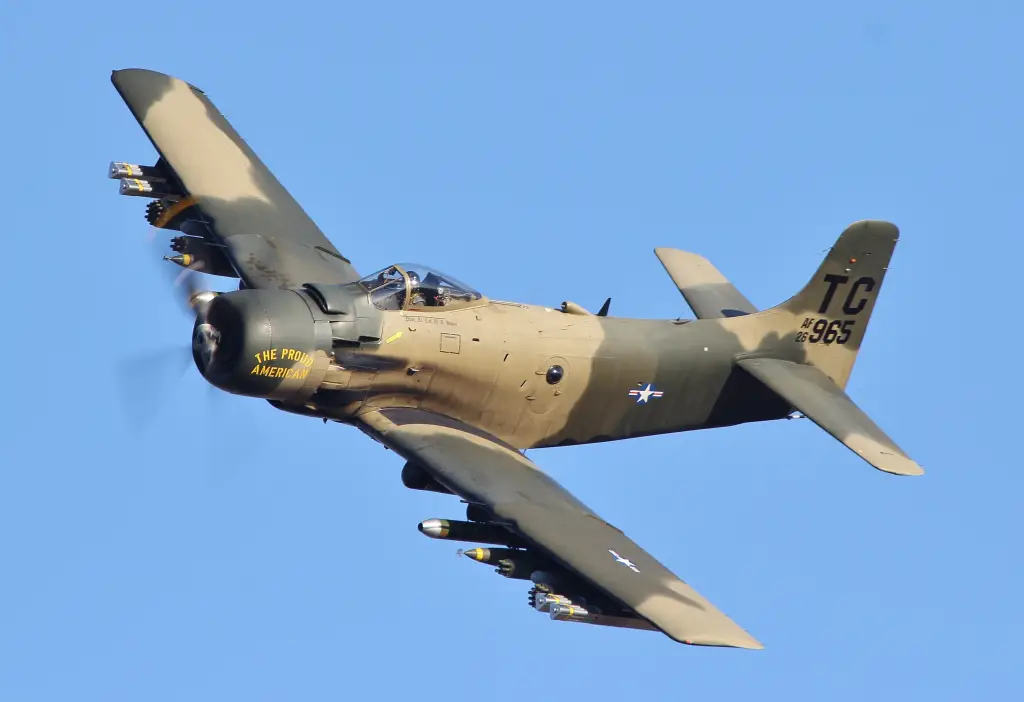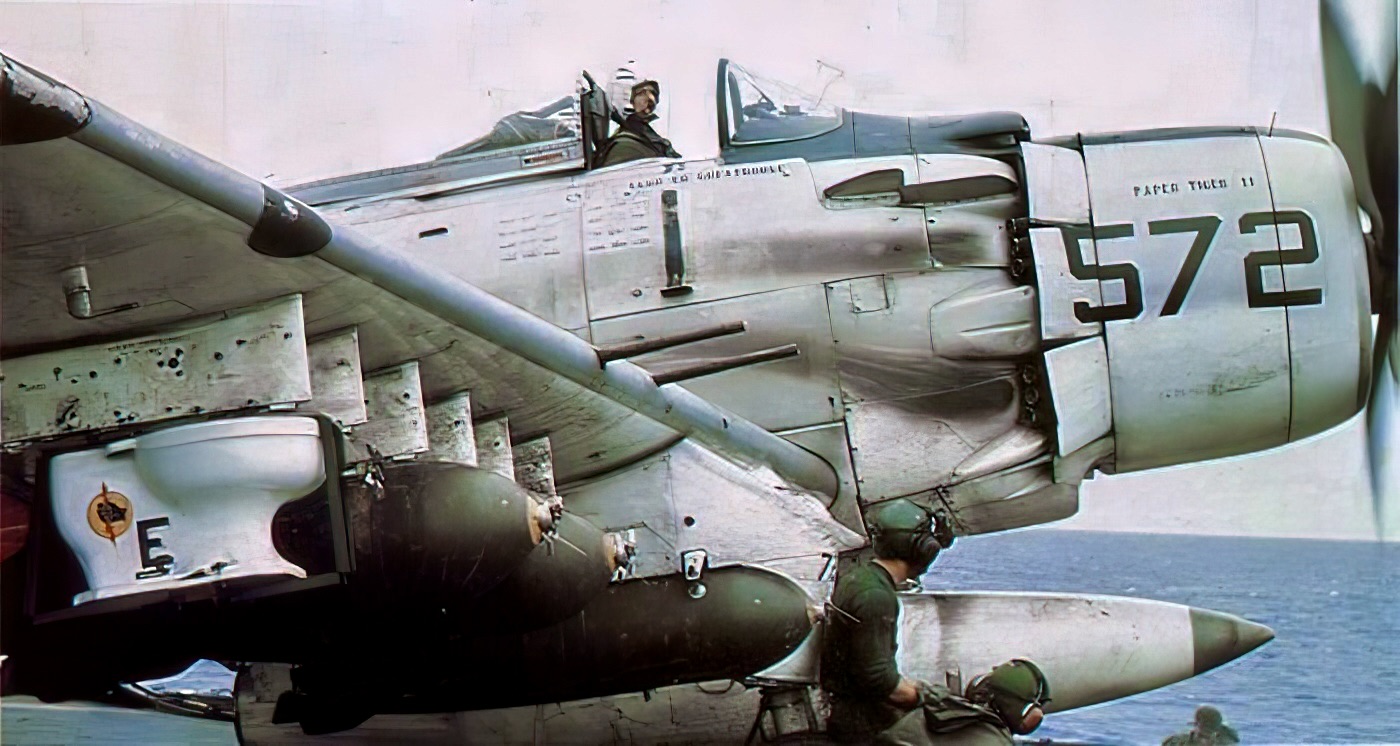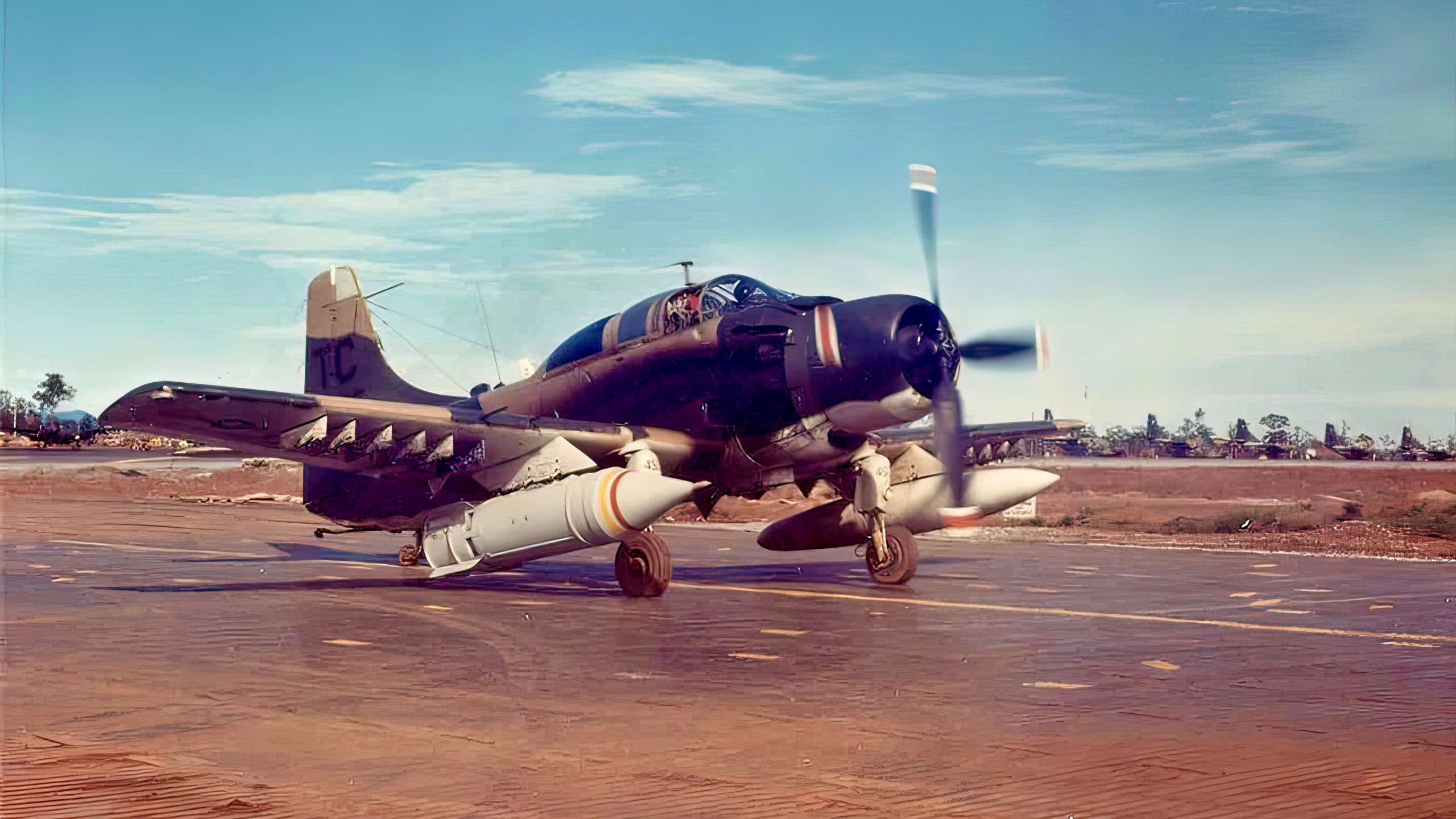
Excellent combat capabilities
The Douglas AD/A-1 Skyraider, also dubbed ‘Spad’, was not particularly graceful in appearance. With its barrel-like fuselage and rigid lines the Skyraider looks were hardly as attractive as, for example, those of Vought F4U Corsair. Yet, the ‘Spad’ remained a workhorse of the U.S. Navy and U.S. Marine Corps over several decades due to its excellent combat capabilities. It could carry very large amounts of munitions over large distances and drop them on the enemy targets with enviable precision. Its other nicknames were ‘Able Dog’ and ‘Flying Dump Truck.’

Douglas designers started developing AD-1 (the series was later redesignated as ‘A’) in the heat of the Second World War and it made its first flight on March 18, 1945. However, it was delivered to the military only next year, so the Skyraider didn’t see any action in the WWII.
This was a sturdy ground-attack aircraft. Powered by a single 2,700 hp Wright R-3350-26W engine, it was capable of carrying up to 8,000 pounds of bombs. The Skyraider was also equipped with four 20mm cannons. Fifteen hardpoints allowed for the use of a broad variety of munitions, such as 11.5-inch Tiny Tim rockets. Servicemen used to say that the Skyraider could carry pretty much anything under its wings. In fact, to prove that on one occasion a Skyraider dropped on the enemy a kitchen sink attached to a 1,000-pound bomb, and on another, a toilet.

The Skyraiders active frontline service started in Korea in July 1950. There it was used against a variety of ground targets, including bridges and power plants. On May 1, 1951, eight Skyraiders knocked out the Hwachon Dam with Mark 13 torpedoes. During that war the Skyraider also scored one aerial kill by taking town a Soviet-made Po-2 biplane. There were losses, too. Overall, 128 Skyraiders were lost in Korea, including 101 in combat.
Before retiring from service, the Skyraider saw extensive combat use in yet another war. Skyraiders were among the first to deliver strikes on the North Vietnam following the Tonkin Gulf incident in August 1964. In Vietnam they were flown both by the U.S. Navy and South Vietnamese air force pilots.

The extensive use of Skyraider for attack missions in Vietnam continued until 1968, when it passed that role to modern jet aircraft, such as LTV A-7 Corsair II and Grumman A-6 Intruder. The Skyraider went on flying search-and-rescue missions together with USAF helicopters. It was also employed in the electronic countermeasures role. The Vietnam War took even greater toll on the type then the Korean one, with 266 planes and 144 pilots lost, mostly to ground fire.
A total of 3,180 Skyraiders of 28 variations were produced before the production ceased in 1957, but the type remained in active service for many more years. The Skyraider was finally taken out of service with the U.S. military by late 1972, although it went on flying as part of some other nations’ air forces, including France. Some A-1s were flying missions in Africa till late 1980s.
